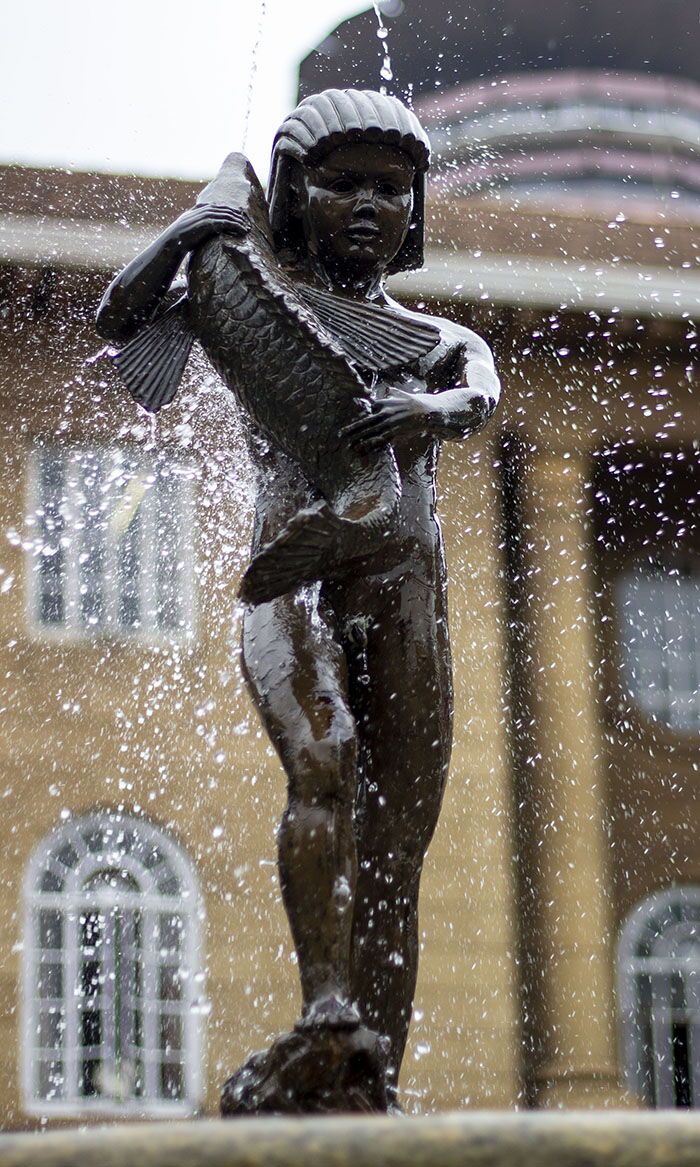The Naked Boy Statue at Kenya’s Supreme Court: Meaning, History & Controversy
Why Is There a Statue of a Naked Boy Outside the Supreme Court of Kenya?
If you’ve walked along City Hall Way in Nairobi, you’ve probably noticed it — a statue of a naked boy standing outside the Supreme Court of Kenya.
It’s not something you’d expect to find outside one of the country’s most important legal institutions. So what’s the story behind this unusual sculpture?
Why is a naked boy holding a fish part of Kenya’s judicial landscape?
Let’s dive into the real story behind the statue, how it got there, and why it still stands today.
 The History of the Naked Boy Statue
The History of the Naked Boy Statue
The statue isn’t just random art it has a name: The Hamilton Fountain.
It dates back to the 1930s when it was commissioned by Gertrude Hamilton in honor of her husband Alexander George Hamilton, a British lawyer who served in Kenya during the colonial era.
Originally crafted in Europe, the first statue was lost at sea when the ship carrying it sank in the Indian Ocean.
A second version was created, but it was later stolen after it was installed in Nairobi.

Finally, the Nairobi City Council commissioned Robert Glan, a Kenyan sculptor, to create a new version.
His bronze and marble masterpiece is what stands outside the Supreme Court today a piece of local art with deep historical roots.
What Does the Statue Symbolize?
At a glance, it might look like a naked boy with a fish, peeing into a fountain. But each element carries symbolic meaning that reflects the ideals of justice.
- Nakedness – Symbolizes transparency. Justice should be open and visible to all.
- Blindfold (or closed eyes) – Represents impartiality. Justice should be unbiased, regardless of background.
- The Fish – Slippery like truth or justice, reminding us how difficult it can be to catch or define.
- A Child – Stands for innocence and courage. Justice must be fearless, yet pure.
- Water from Turtles – Constant flow from four turtles around the boy represents ongoing justice.

These powerful symbols combine to express that justice must be fair, innocent, and above all, open.
Why the Statue Has Sparked Controversy
While it was created with deep symbolism, the statue has stirred controversy over the years.
In 2009, the group Maendeleo ya Wanaume filed a petition asking for the statue to be removed.
They argued that it misrepresented the boy child and was culturally insensitive.
Again in 2024, a man from Kiambu County, John Mweha, petitioned the Judiciary to remove or cover the statue, calling it offensive to Kenyan cultural values.

However, the Judiciary of Kenya has consistently defended the sculpture.
In official statements, they’ve said it represents timeless ideals, similar to how Lady Justice often blindfolded and holding scales stands outside courts around the world.
A Protected Piece of National Heritage
In 1995, the Supreme Court building and the Hamilton Fountain were both declared national monuments.
That means they are protected by law and recognized as part of Kenya’s official heritage.
For many Kenyans, the statue is more than just controversial art.
It’s a reminder of how the country’s justice system was shaped a symbol of values that continue to evolve with society.
FAQs
Is the naked statue still outside the Supreme Court? Yes.
Despite past petitions, the statue remains in place and is protected as part of Kenya’s national heritage.
Who was Alexander George Hamilton? He was a lawyer who served in Kenya during the colonial period, known for defending victims of World War II. His wife commissioned the statue in his honor.
Why is the statue controversial? Critics argue it’s inappropriate or culturally offensive. Supporters say it’s a powerful symbol of justice.
What does the fish represent? It represents how slippery and hard to hold justice can be — a reminder of the complexity of truth.






